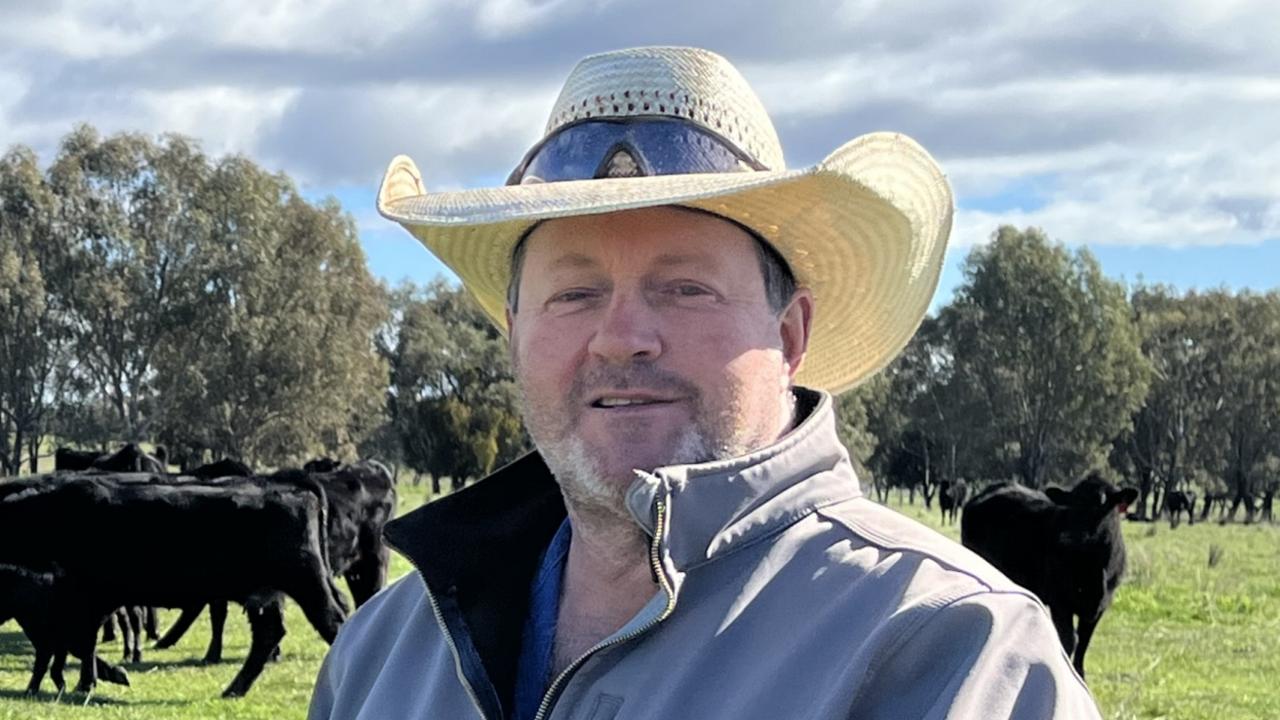Raised-bed cropping: Derrinallum farmers Matthew and Rachel Hinkley go for growth
RAISED-bed cropping is helping this couple push the yield boundaries, writes JAMES WAGSTAFF.
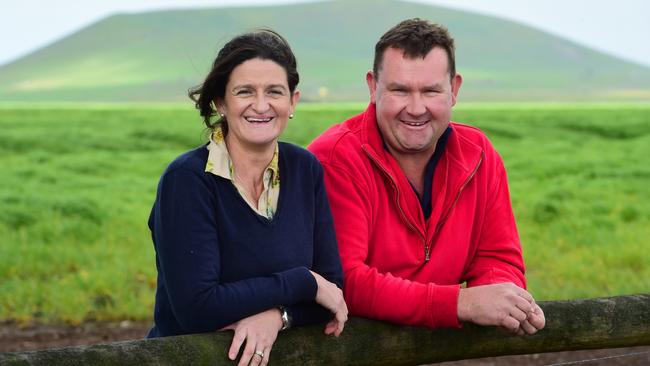
IF IT makes no cents it makes no sense.
It’s a simple rationale that has led to a dramatic increase in scale, efficiency, yields and profits for agronomists-turned-farmers Matthew and Rachel Hinkley, from Derrinallum in Victoria’s Western District.
Within just 13 years, the Hinkleys have grown the size of their mostly cropping operation by 400 per cent, boosted their return on assets to an impressive 10 per cent and lifted yields to rival the best in the state.
And the couple are far from finished. They plan to keep growing their business and have their eyes fixed firmly on hitting the magical 10 tonnes/ha mark with their crops.
Key to the Hinkleys’ operation is a targeted approach of buying and leasing land, a scientific-based input program and “reverse irrigation” — growing crops on raised beds to avoid losses during wet years such as this in the high-rainfall Western District.
They have invested heavily in plant machinery to improve efficiencies, built their own weighbridge and testing station to objectively assess the quality of their grain, and put together about 3000 tonnes of storage capacity on-farm, which allows them to employ futures and hedge contracts to take advantage of market highs.
Not that any investment decision has been made lightly. Matthew and Rachel are firm believers of thinking with their heads and not their hearts.
“We’re not running a third, fourth, fifth or sixth-generation family farm,” Rachel said. “We’re not sentimental.”
“We are very much driven by economics,” Matthew added. “I believe there is as much done in here (in the farm office) as there is out there (in the paddock).”
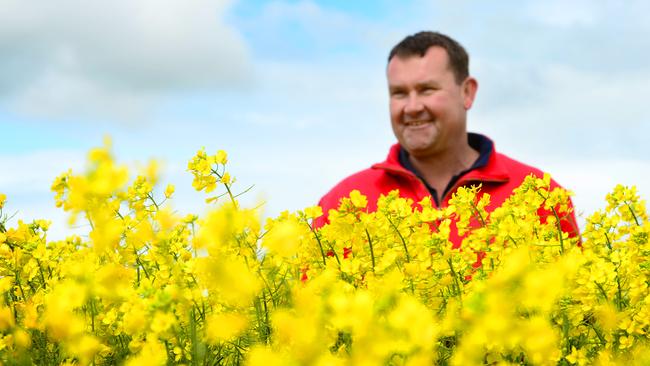
GROUND UP
MATTHEW, 43, and Rachel, 41, met while studying agriculture science at the University of Melbourne and later both worked as agronomists at Mortlake and Horsham.
But it was a five-year stint working around Moree, in northern NSW, during the late 1990s and early 2000s that opened the couple’s eyes to what could be achieved with farming.
“Here we discovered how big business, big scale, big money worked and how to do a crop right,” said Rachel, who later worked in agri-finance.
“Moree was 10 years ahead of broadacre cropping when we went up there.
“It was the first time we’d really had a good look at GPS technology — they were all over it — their crop management, their intensive crop scouting, their real attention to fertilising and seeding rates gave us a really good, solid agronomy foundation.”
It was also during this stint the Hinkleys learned more about irrigating and how cotton farmers “ran their irrigation beds to get water on and off their crops, and recycle it”, which they modified on their return to Victoria in 2004 with the purchase of 368ha in 625mm rainfall country at Derrinallum.
“We pretty much set it up as a cotton crop, but rather than irrigate, our rainfall is our irrigation. You’ve just got to get the excess off as soon as you can to avoid waterlogging, and get the water away,” Matthew said.
“To be successful in the high-rainfall environment, yeah, in the dry years you get away with it beautifully, but in the wet years you get crucified.
“We can’t afford to have two years in 10 missed with high land prices and high input costs.”
With a lack of equity and capital to purchase large tracts of land, and the Western District notoriously “tightly held”, the Hinkleys built up their business by leasing farms.
As capital allowed, they also bought some of their own country and now operate across 1620ha within 35km of the 728ha home block at Derrinallum.
About 55 per cent of the land is leased, negotiated on a per-hectare basis. Some leases are longer than traditional two to three-year contracts, which gives the Hinkleys assurance to carry out necessary earthworks and trackworks.
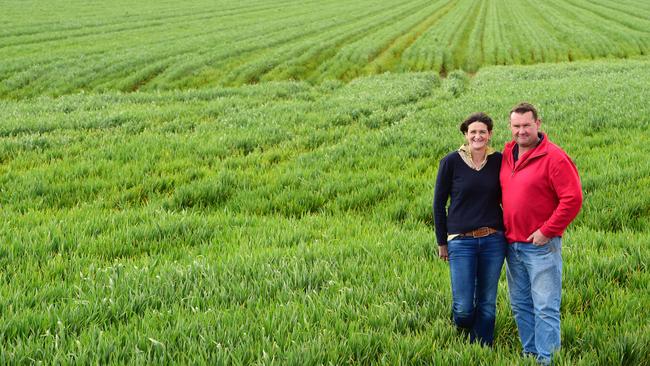
GRAIN BRAINS
THE Hinkley Farms business is predominantly grain and hay, covering 1460ha. This year’s crops comprise about 550ha of wheat, 500ha of canola and 365ha of barley (including 175ha yet to be sown because of wet weather).
The bottom 10 per cent of the cropping country is used for hay production. This year, with “plenty of hay around”, it may be used to finish more lambs. Traditionally about 1000-1200 store lambs are bought in each November to utilise crop stubbles.
Soils vary from red volcanic dirt to predominantly grey clay. Low-lying areas mostly comprise heavy self-mulching black clay. Rachel said the farms were in “in a sweet spot” climate wise to finish crops “which is really advantageous”.
Matthew said they ran a “reasonably simple” cropping program on a three to four-year rotation of canola followed by a year or two of wheat and a year of barley.
The program generally starts with earthworks in February and March ahead of an April planting, with canola and red wheat varieties “either side of canola, depending on when the break is” followed by white wheats and barley.
The aim is to have all crops sown by May 25, before it gets too wet.
To help offset their high rainfall, all crops, with the exception of hay, are grown on 200-250mm-high flat-top beds, the centres of which are spaced two metres apart.
The beds reduce waterlogging, allowing excess water to run off the crop and into a drain, and into designated fenced-off tree and wetland areas.
The entire farm has been topographically mapped, which means the Hinkleys know exactly where the water is going to run. There is 30m of domed headland turnaround areas at each end of the beds, but they have begun increasing this to 36m.
This year the farm had received 411mm of rain to the end of August, which Matthew said was only about 20mm above average but “all about timing”. “We had 120mm in April and we ran water out of beds on Anzac Day,” he said.
A soil-moisture probe “is showing absolute capacity at the moment”.

DOWN TO EARTH
SOWING rates vary according to seed weight counts, with the Hinkleys aiming for a “ballpark” figure of 200 plants a square metre and 800 tillers a square metre.
Some red wheat varieties — “which have a very big seed” — were this year sown at a rate of 135kg of seed per hectare, while smaller white wheat was sown at 110kg/ha.
Given the Hinkleys’ high rainfall, and wet and cold environment, nitrogen is applied under the seed to get the crops up and going “so they can handle the wet winter”.
About 150kg/ha of MAP and 100kg/ha of urea goes in at sowing, while urea applications during the growing season are dependent on “where the grain price is at, where the protein spread is at, what is the outlook for spring”.
The soil moisture probes also allow the Hinkleys to allocate nitrogen in dry years.
Matthew said their fertiliser bill was high and he was targeting high phosphorus levels — “probably in the order of dairy farms — 25 to 30 is where we want to get our Olsen P, whereas in most cropping programs 15 is regarded as a reasonable mark” — to push production.
“We’re at the 20-22 mark now so we’re not far off,” he said.
“We are big fertiliser users relative to the cropping industry as a whole, on a per-hectare basis, and probably at the top end of what local farmers are using. But that’s all based on calculations of where we are going. I’ve never been scared of throwing money at something if you can get a return.”
Matthew reckons he gets a $2-$3 return for every $1 investment in urea “in 90 per cent of years”.
He said damage from frosts during the season was “quite uncommon” with wheat generally not flowering until October 20. Septoria presents the biggest disease risk in wheat, while blackleg in canola and blotches in barley can cause issues.
The Hinkleys do all their own bed-forming, planting, spraying, haymaking and baling, harvest and sowing. Their investment in plant includes four Case tractors, an 8230 Case harvester with a 12.2m front (with the capability of harvesting 40-60ha a day), laser bucket, grader board and baler.
They also built their own bed former in conjunction with an engineer and this year, for the first time, have put tracks on their boomspray to improve trafficability.

HARVEST BOUNTY
DEPENDING on the season, the Hinkleys’ canola is windrowed at the end of November and sits on the ground for 10-12 days. Canola yields average 2.62 tonnes/ha.
About half the wheat is sold to dairy farmers, and the remainder, H2 hard wheat, averages about 5.4 tonnes/ha “over every acre”.
Last year 200ha of long-season revenue red feed wheat averaged 8.36 tonnes/ha. The Hinkleys have trial plots of long-season wheat, planted in April and harvested in January or February, “that we are feeding really hard to try and achieve 10 tonnes/ha”.
“I’m not interested in growing five tonnes/ha, that’s not where I want to be, I want to be at eight tonnes/ha and then I want to be at 10 tonnes/ha,” Matthew said.
“Canola has been a bit of a poor performer relative to our wheats, now that we’ve been able to hit eight tonnes/ha and above on wheats, we haven’t ever been able to hit four tonnes/ha on canola if you talk about 2:1 ratios.
“I think that is because our canola doesn’t like really wet feet.”
Barley, which “nine times out of 10” meets malting specifications, averages 5.5 tonnes/ha.
Firm believers that “you only get to sell the grain once”, the Hinkleys invested $20,000 in a grain testing machine “that paid for itself within the first year by allowing us to segregate according to protein rather than sending it to town and wondering if it’s APW or H2 or what it is”.
“A lot of people make bad decisions at harvest time when they are forced into it with a lack of storage and cash flow and everything else,” he said.
“With investments like this you get your money back fairly quickly.”
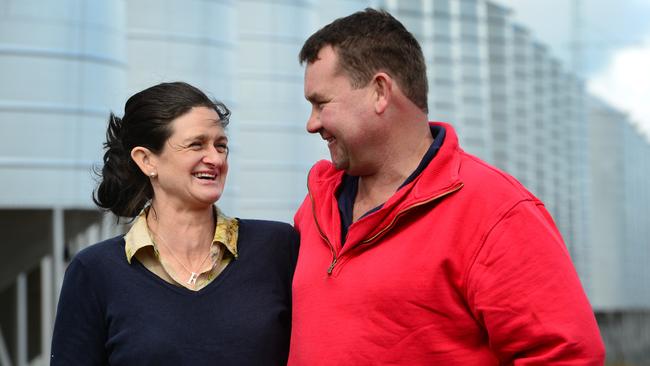
SWAP AND SELL
THE Hinkleys have hedged and forward sold at least a portion of their crop since 2006 and it had been “very successful for us”. They invested in 3000 tonnes of on-farm storage, allowing them to store their grain and sell on a rising market.
“Quite a lot of our marketing will be to do with swaps (hedges). We are still taking forwards when we see them, but it depends where the basis is,” Matthew said. “If we think that swaps offer a better value, we’ll go with swaps rather than the physical market.”
In some years they have had about two-thirds of their crops hedged by the end of October. They have about a third of their crop already locked in this year.
Matthew said current crop prices were OK, but “not setting the world on fire”.
“But it comes down to the multiplication of yield versus price, if I can grow seven or eight tonnes/ha crops I’m happy to have it at $250 (a tonne) but if I’m going to go back to four tonnes/ha it’s a different story,” he said.
Fertiliser, interest and lease are the Hinkleys’ biggest costs. They analyse all their costs but focus on the top 15 because they know that’s where there are gains to be made.
When it comes to returns on assets, split between capital appreciation and operating profit, the Hinkleys target 10 per cent.
“We’d like to think that we can go more but we’re being realistic,” Matthew said. “We might achieve 15 per cent some years, other years we might achieve zero.”
Looking ahead, he said land prices in the Western District were proving “prohibitive”. For their most recent land purchase, they paid $7500 a hectare.
Matthew said they did a lot of budgets and forecasts on whether it was viable and “it becomes questionable when you have production that this year is going to be down and our grain prices are not going to be super special at this stage”.
The Hinkleys are also toying with the idea of vertical integration. Three years ago they bought a dairy at Scotts Creek, which is currently leased but has potential to consume their grain and hay.
On the crops front, they do not “necessarily want 100,000 acres (40,470ha) under our banner but we’d like to have 5000 or 6000 (2023-2428ha) within the next five or 10 years”.
“That is a viable entity in itself,” Matthew said. “It’s a fairly sweet spot before we have to replicate — two air seeders, four blokes working for us. But we’ll see how we go.”

